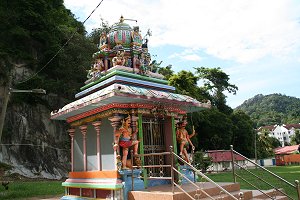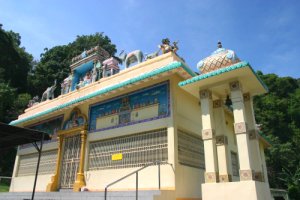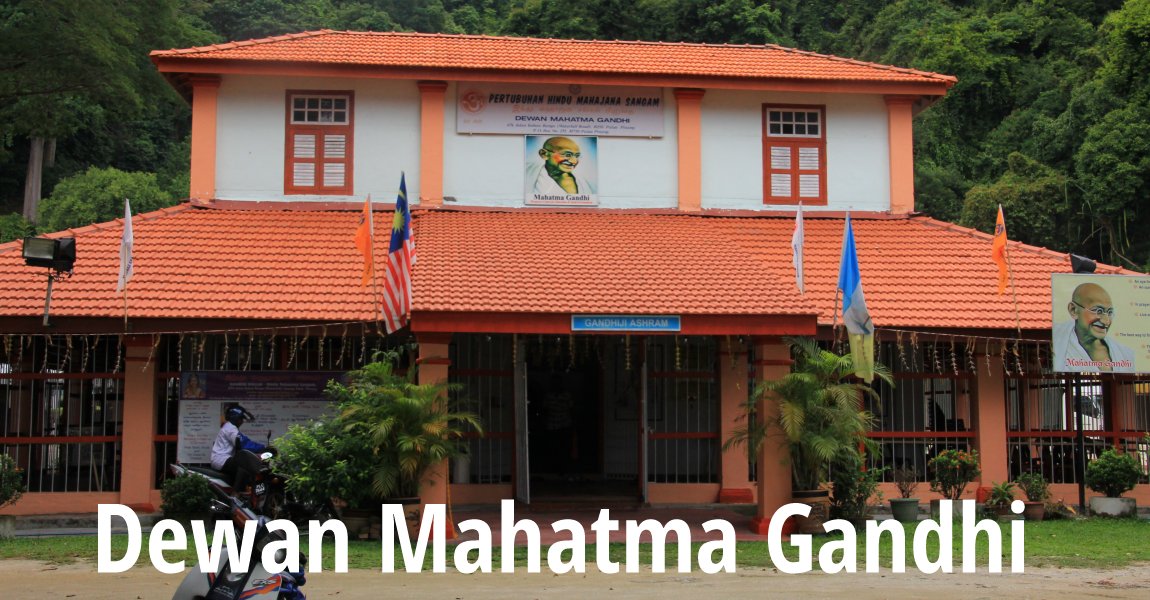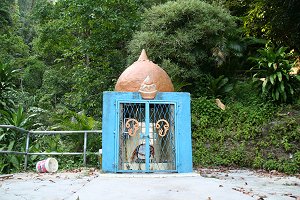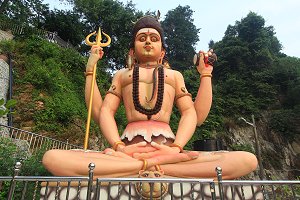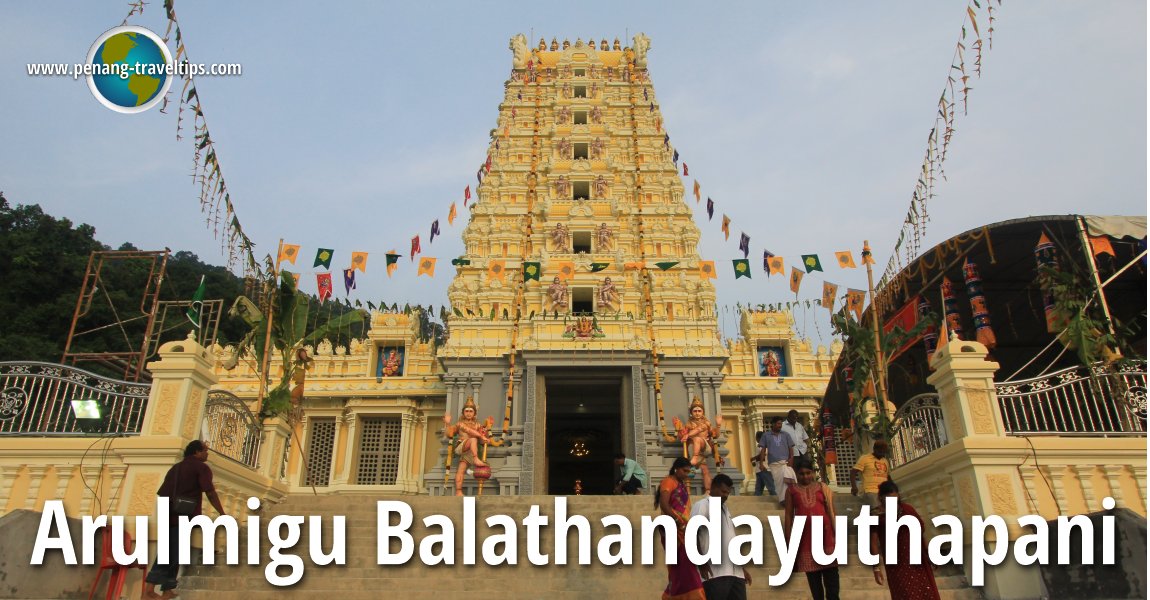 Arulmigu Balathandayuthapani Kovil, the Penang Waterfall Hill Temple (1 July 2012)
Arulmigu Balathandayuthapani Kovil, the Penang Waterfall Hill Temple (1 July 2012)
Penang Waterfall Temple, officially known as the Arulmigu Balathandayuthapani Kovil and Thanneermalai Shree Balathandayuthapani Devasthanam (Hindu: அருள்மிகு பாலதண்டாயுதபாணி கோயில் and தண்ணிர்மலை ஸ்ரீ பாலதண்டாயுதபாணி தேவஸ்தானம்), or Hill Top Murugan Temple, is one of the oldest Hindu temples in Penang. It was originally located within the grounds of the Penang Botanical Gardens.
According to popular belief, a sadhu (holy man) chose a spot close to the waterfalls for a shrine dedicated to Murugan. The place was called thanner malai, meaning water hill, and the deity itself was known as Thannermalaian, or "he who resides by the waterfall". The waterfall in question is the Penang Botanic Gardens Waterfall, the biggest waterfall on Penang Island (but alas, is out of bounds to the public), where the temple got its start.
This original site is as old as the founding of George Town itself. It was the site of the Balathandayuthapani temple until 1850, when the authorities took over the area to establish the Botanic Gardens Reservoir. That was when the temple moved out, leaving at its original site a small shrine.
After the authorities took over the site of the original Balathandayuthapani Temple, the temple was provided with a new eleven-acre hillside plot on the left side of the Botanic Gardens Road. The temple grew to become the focus of the annual Thaipusam celebrations.
At the foot of the staircase leading to the Balathandayuthapani temple is a shrine dedicated to the deity Ganesha. The Sree Ganeshar Temple has since developed into a separate temple in its own right, and with its own devotees.
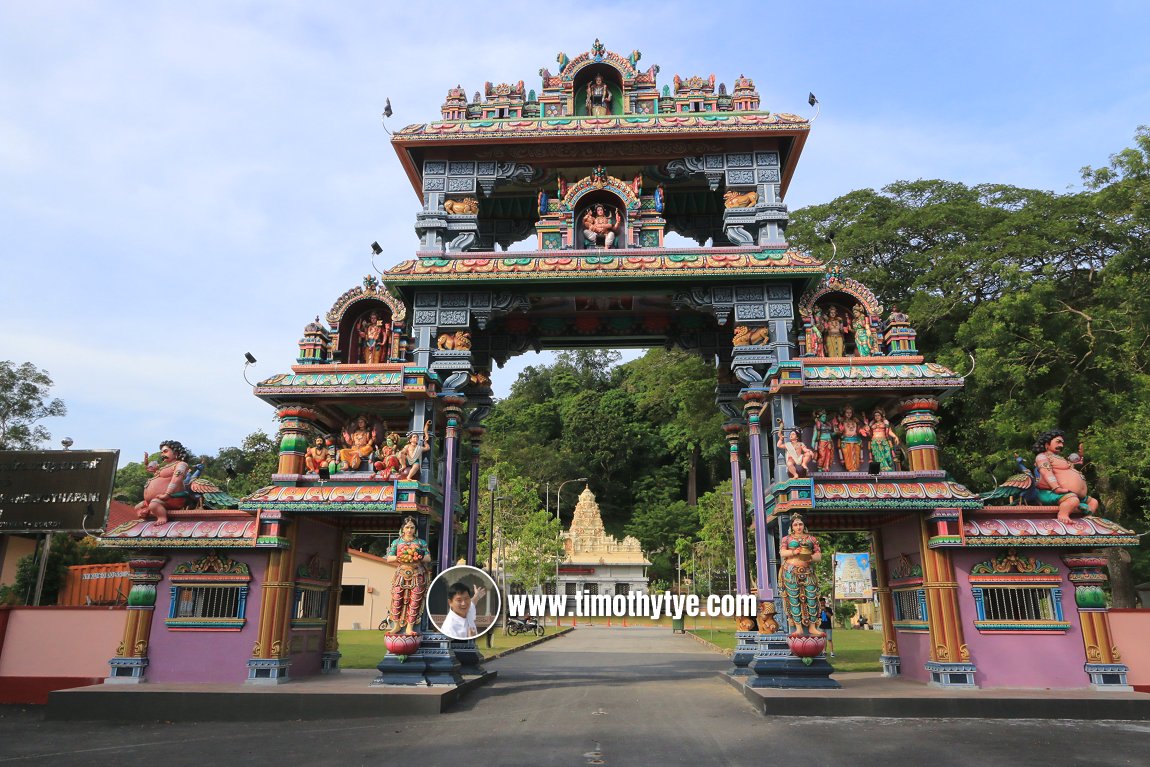 Arulmigu Balathandayuthapani Temple, Penang (22 August 2018)
Arulmigu Balathandayuthapani Temple, Penang (22 August 2018)
 Arulmigu Balathandayuthapani Temple, Penang (22 August 2018)
Arulmigu Balathandayuthapani Temple, Penang (22 August 2018)
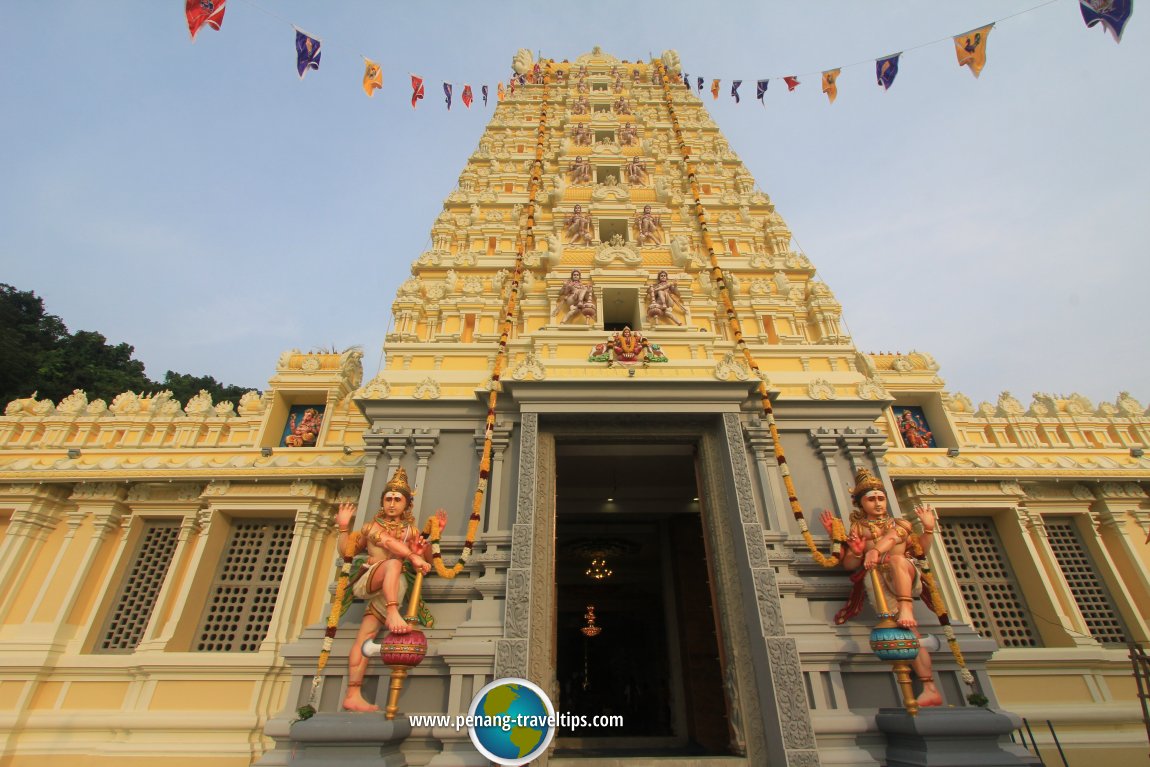 Entrance to the Arulmigu Balathandayuthapani Temple (1 July 2012)
Entrance to the Arulmigu Balathandayuthapani Temple (1 July 2012)
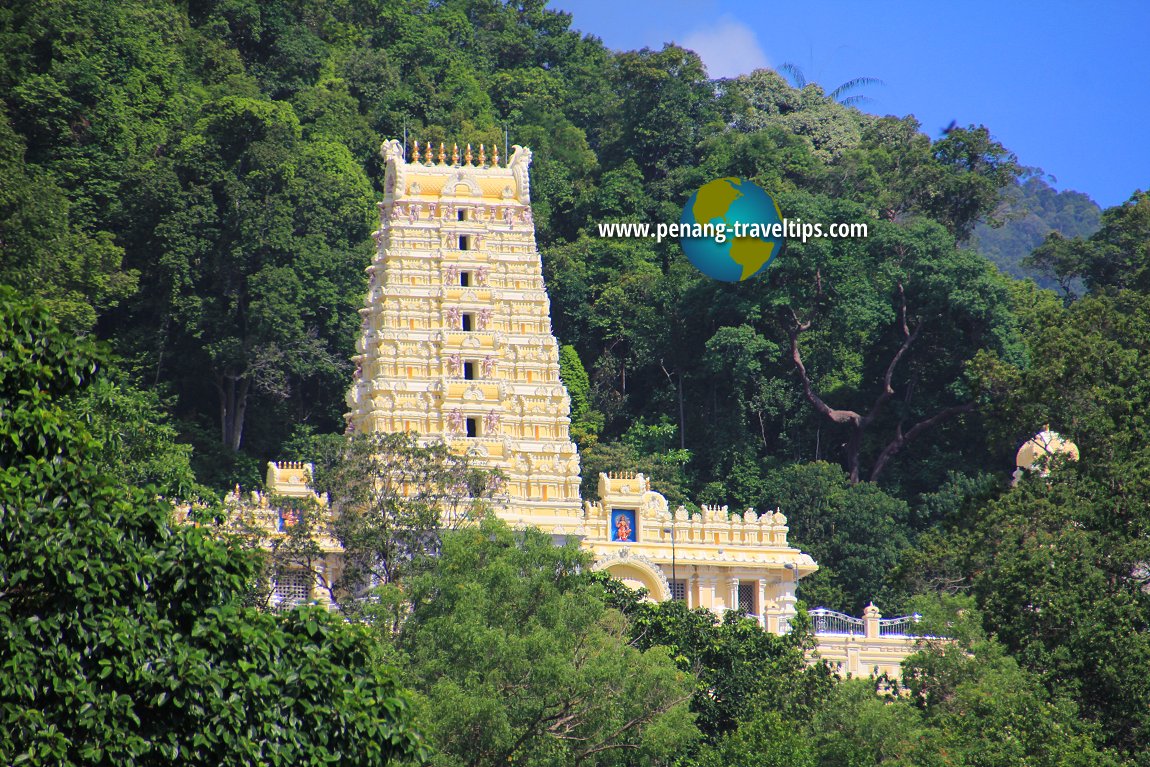 The Balathandayuthapani Temple, aka Waterfall Temple, peeking out from among the forest trees. (22 May 2013)
The Balathandayuthapani Temple, aka Waterfall Temple, peeking out from among the forest trees. (22 May 2013)
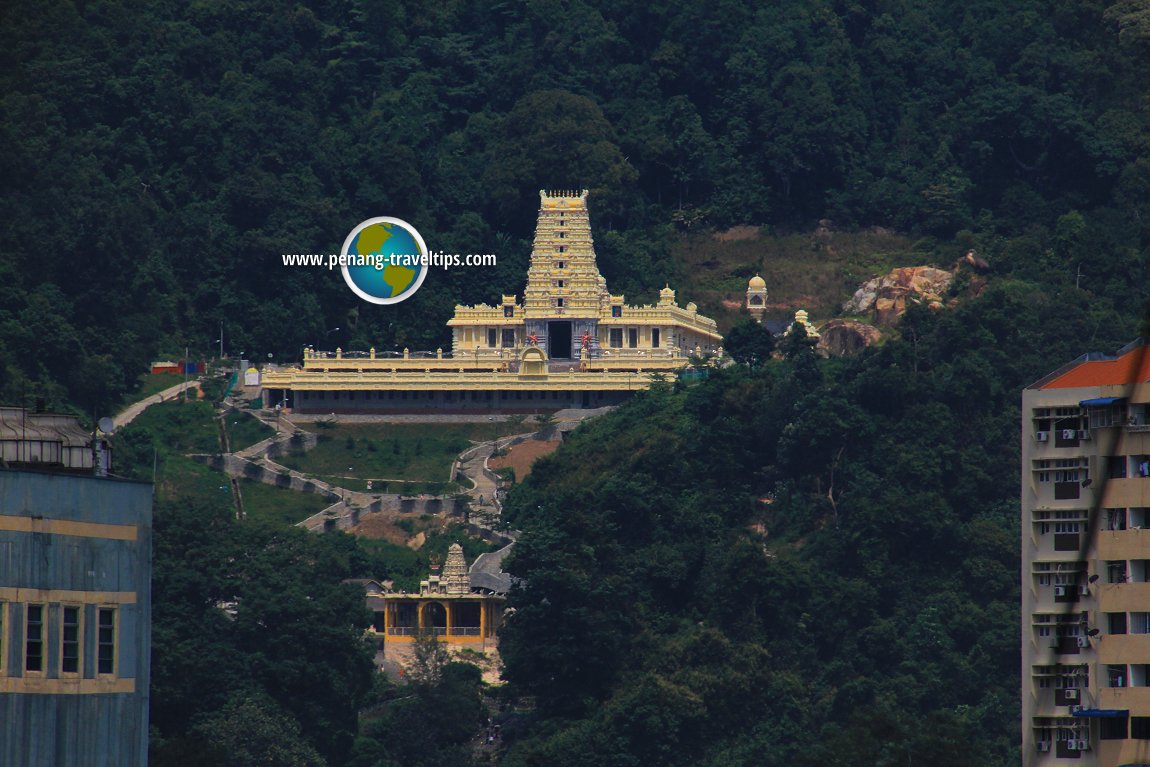 Arulmigu Balathandayuthapani Temple (24 August 2013)
Arulmigu Balathandayuthapani Temple (24 August 2013)
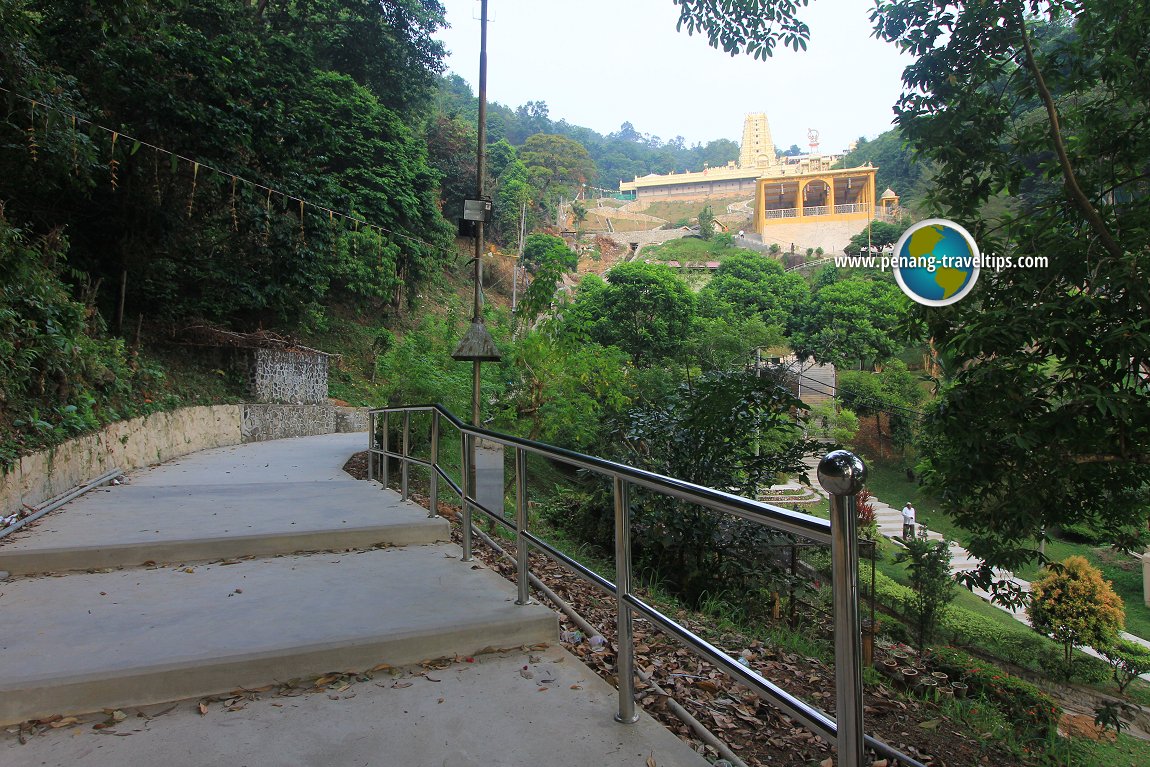 Approaching the Balathandayuthapani Temple (1 July 2012)
Approaching the Balathandayuthapani Temple (1 July 2012)
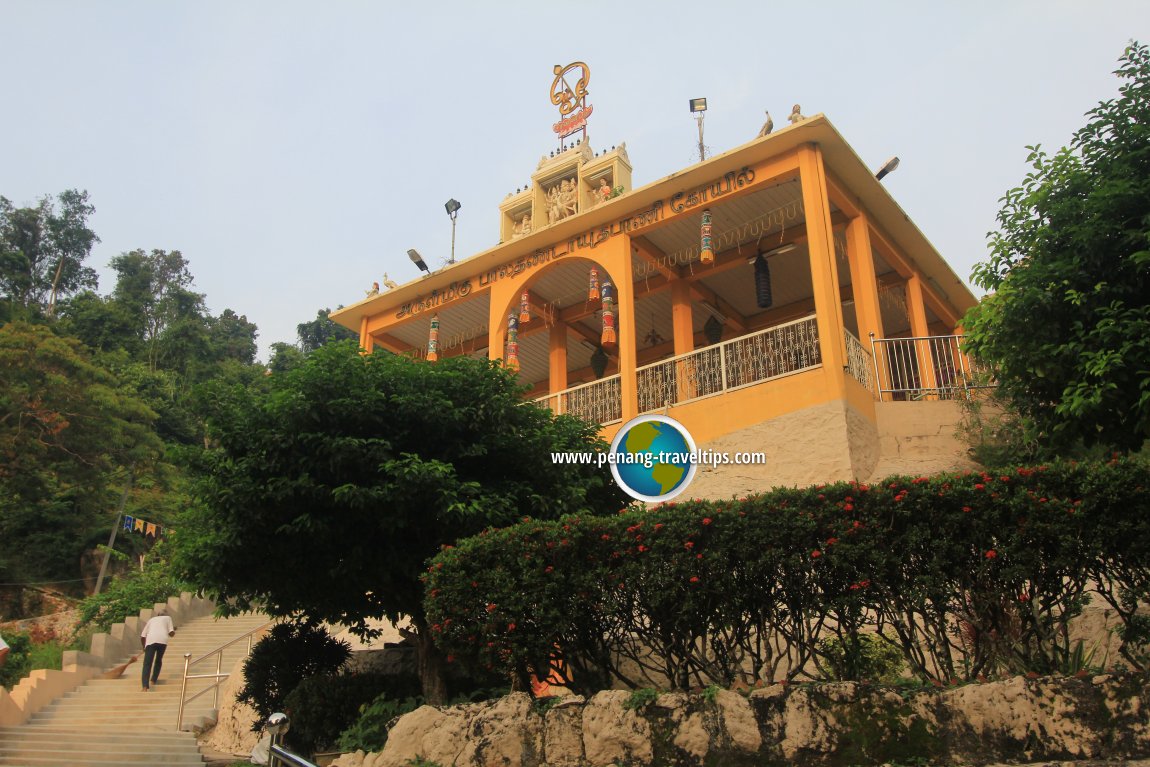 The old Arulmigu Balathandayuthapani Temple (1 July 2012)
The old Arulmigu Balathandayuthapani Temple (1 July 2012)
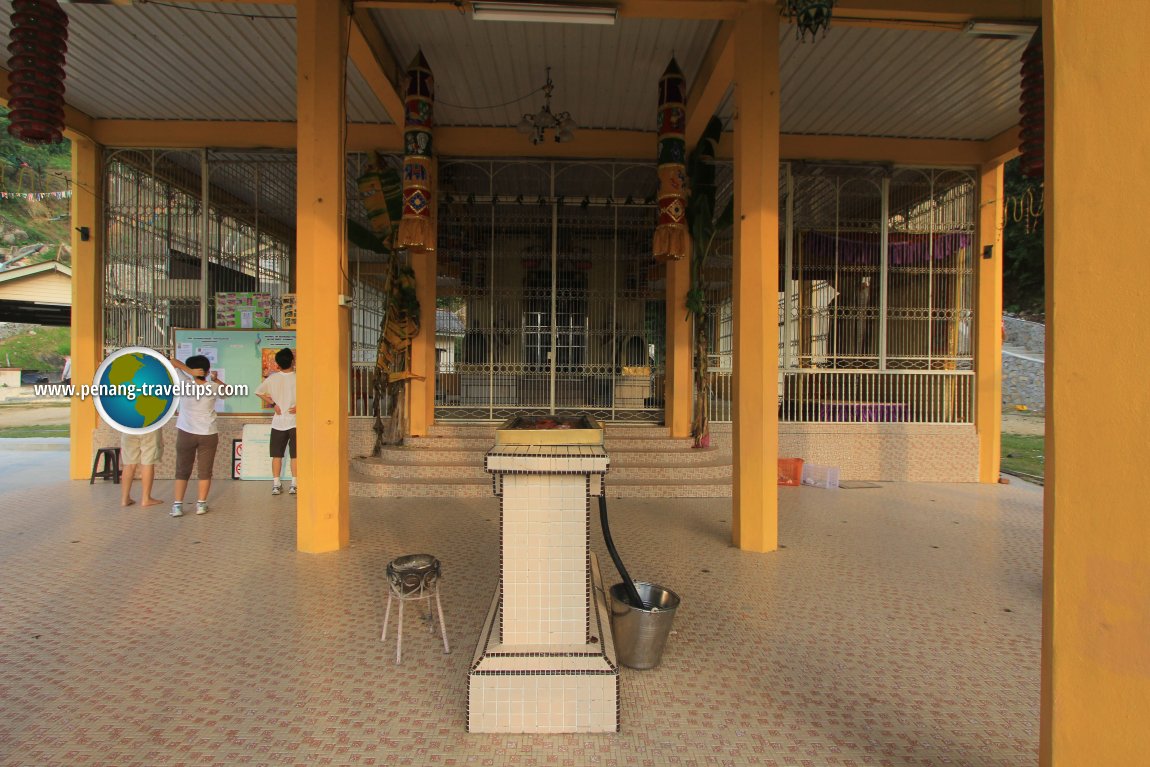 The old Arulmigu Balathandayuthapani Temple (1 July 2012)
The old Arulmigu Balathandayuthapani Temple (1 July 2012)
The Balathandayuthapani temple has undergone several major renovations. This is in keeping with the requirements of the Hindu religious tenets, that renovations be done for every mamangam, or 12-year cycle.
Over the years, as the number of devotees and worshippers increased, the Hindu Endowments Board found that the hilltop temple could no longer accommodate the numbers. This is especially true in the past decade, with more and more visitors converging on the temple particularly during the Thaipusam celebration (other feast days of smaller scale include the Chitra Pournami, Kantha Sasthi, Thirukarthigai and Aadipournami).
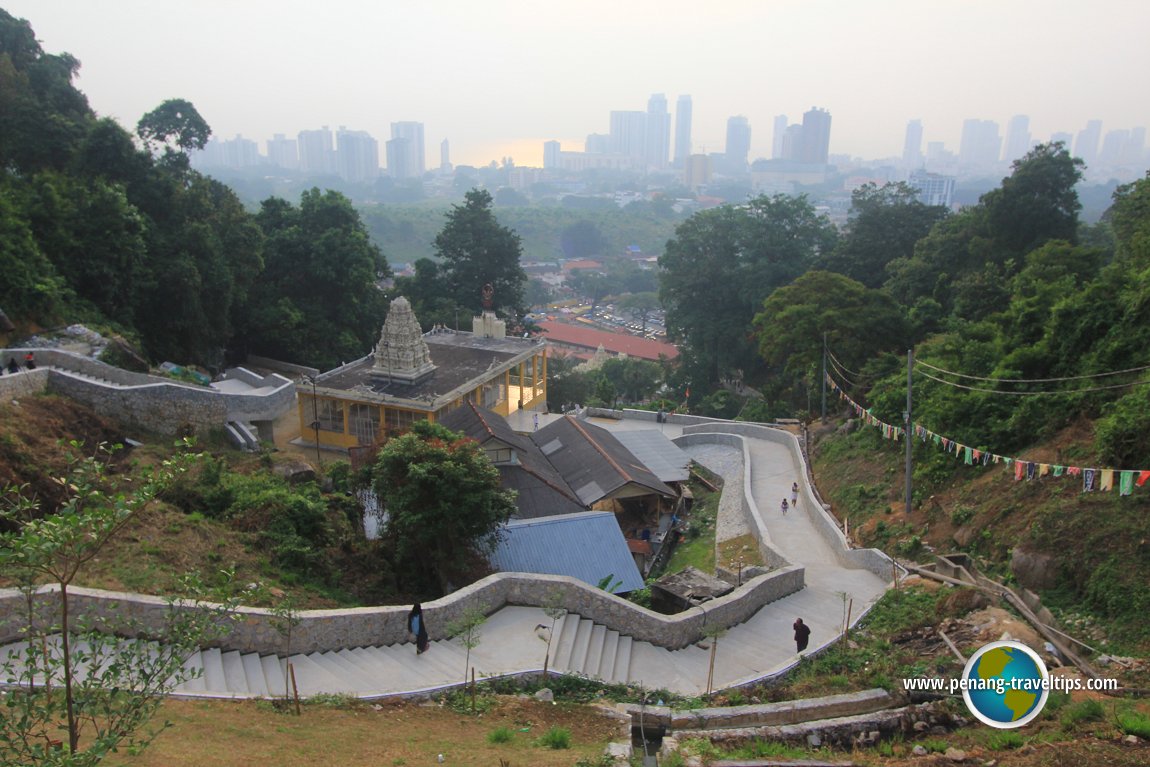 Looking down from Balathandayuthapani Temple (1 July 2012)
Looking down from Balathandayuthapani Temple (1 July 2012)
A feasibility study was conducted to ascertain the viability of expanding the old hilltop temple. Consultants engaged in the study discovered that the temple was sited over several subterranean springs. This makes its location unstable. After deliberating over the various reports, the Hindu Endowments Board made a decision to relocate the Balathandayuthapani temple to a new, safer location.
The new Arulmigu Balathandayuthapani temple is planned to accommodate up to 700,000 visitors, a number expected for every Thaipusam Festival. In keeping with its position as a major Hindu temple, it will have a huge maha mandapam, the pillared outer hall in which public rituals are performed.
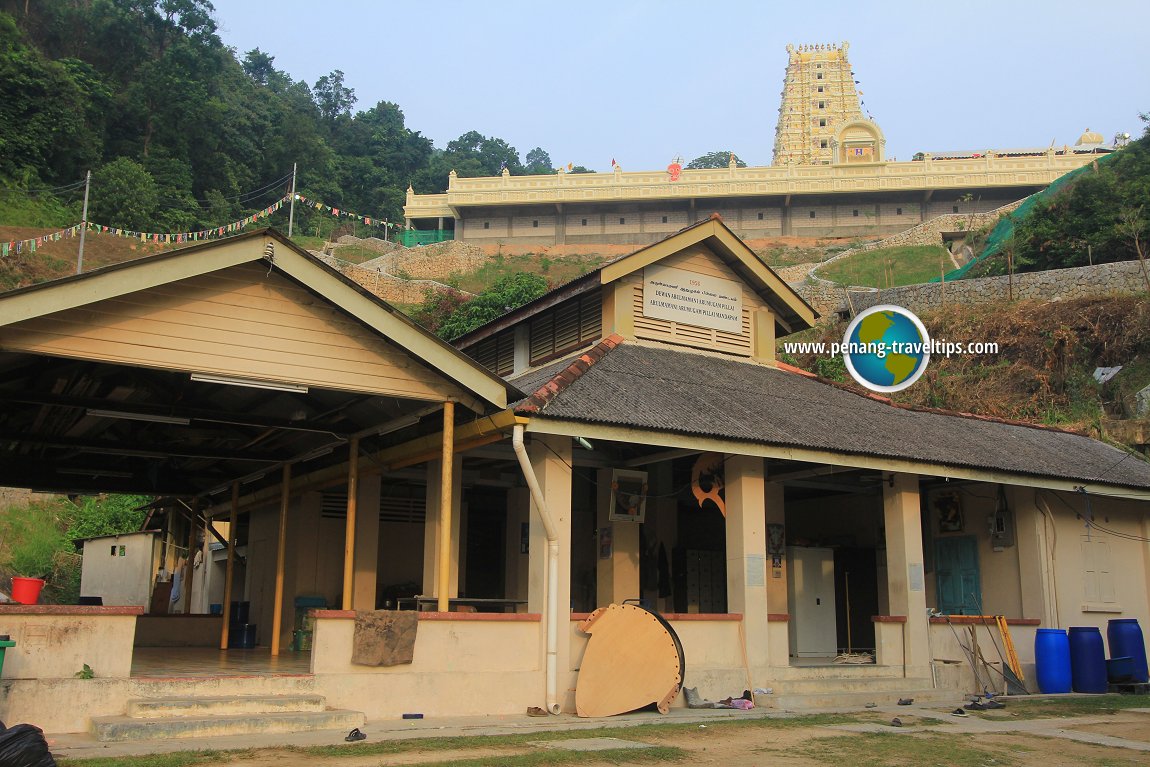 The Arulmamani Arumugam Pillai Mandapam, with the new Balathandayuthapani Temple looming behind it (1 July 2012)
The Arulmamani Arumugam Pillai Mandapam, with the new Balathandayuthapani Temple looming behind it (1 July 2012)
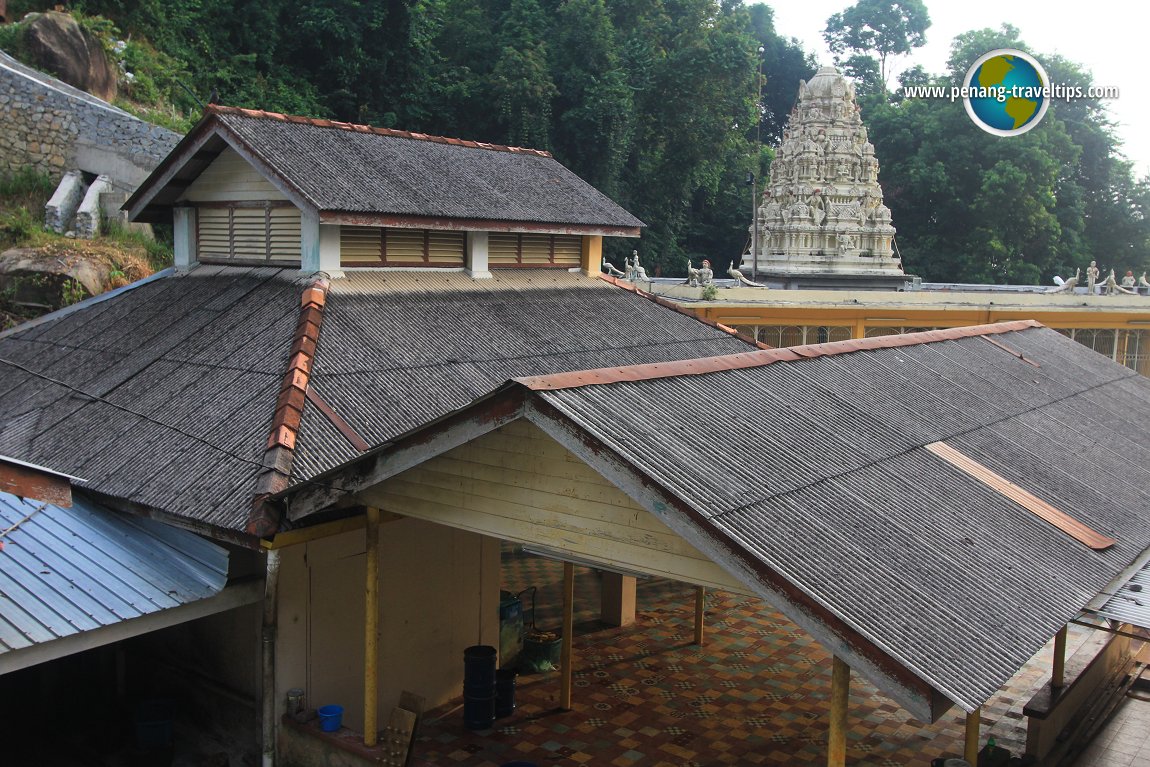 The Arulmamani Arumugam Pillai Mandapam, with the old Balathandayuthapani Temple in the background (1 July 2012)
The Arulmamani Arumugam Pillai Mandapam, with the old Balathandayuthapani Temple in the background (1 July 2012)
Visitors to the new Arulmigu Balathandayuthapani Temple has an even longer climb than before, but the view makes the effort worthwhile. With over 500 steps (some estimates put the figure at 512 steps, though this is difficult to judge, as there are more than one route to the top), it is longer than the 272 steps of Batu Caves. The winding route allows you to stop several times to enjoy the scenery.
Half way to the top, you arrive at the Old Hill Top Murugan Temple, the former site for the Thaipusam celebrations. Next to it is the Arulmamani Arumugam Pillai Mandapam, a pavilion built in 1956. It acts as the staging area for visitors and pilgrims. From here, you get a good view of the new Arulmigu Balathandayuthapani Temple before you continue your ascend. As you climb higher, the skyscrapers of Gurney Drive and eventually the rest of George Town come into view.
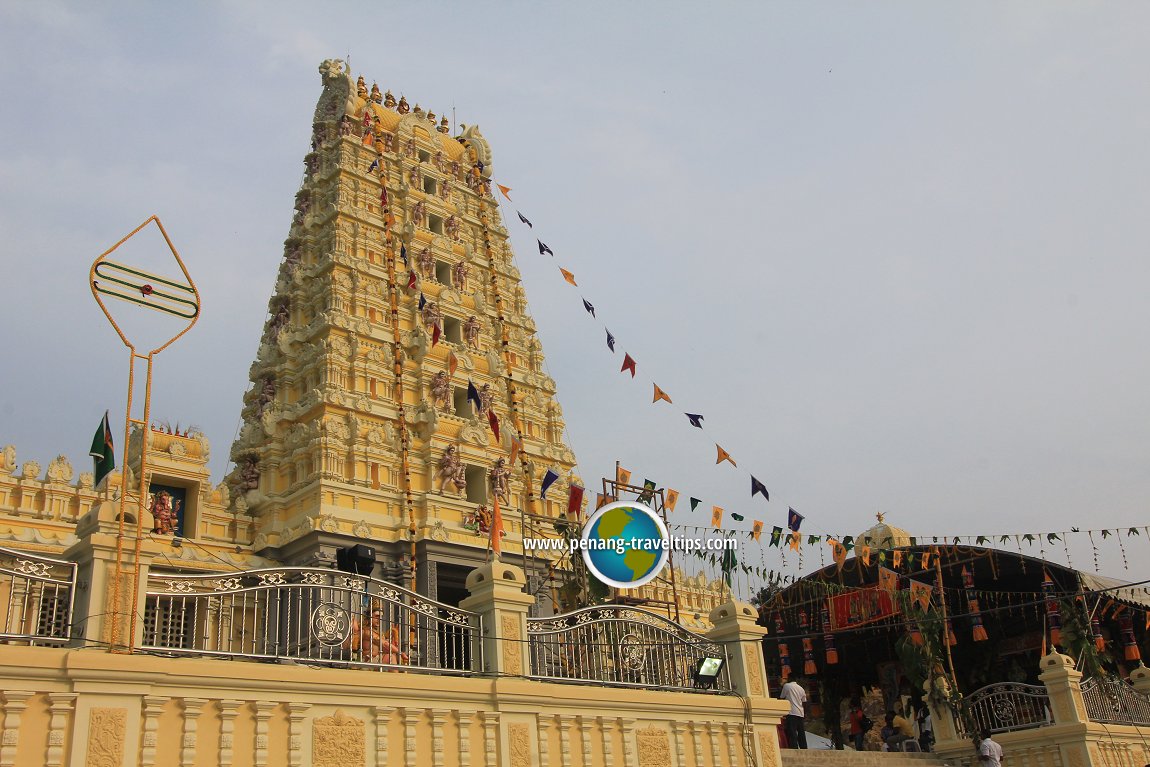 The rajagopuram of the Arulmigu Balathandayuthapani Temple (1 July 2012)
The rajagopuram of the Arulmigu Balathandayuthapani Temple (1 July 2012)
Arriving at the top, you enter the temple through a main gate topped by a gigantic seven-storey rajagopuram, or kingly temple tower, which is intricately embellished with multi-tier statues of deities. The maha mandapam surrounds the garbhagriha, or sanctum sanctorum, where the image of Murugan is placed. There is also alcoves or shrines for other deities.
The maha mandapam is supported by rows of intricately carved pillars. Hanging down from the ceiling are chandeliars that cast their light over the well-polished floor. Devotees gather in groups on the floor or awaiting their turn to perform prayers and rituals.
Since its recent expansion, the Balathandayuthapani Temple has become one of Penang's major tourist attractions, and not just during the Thaipusam season.
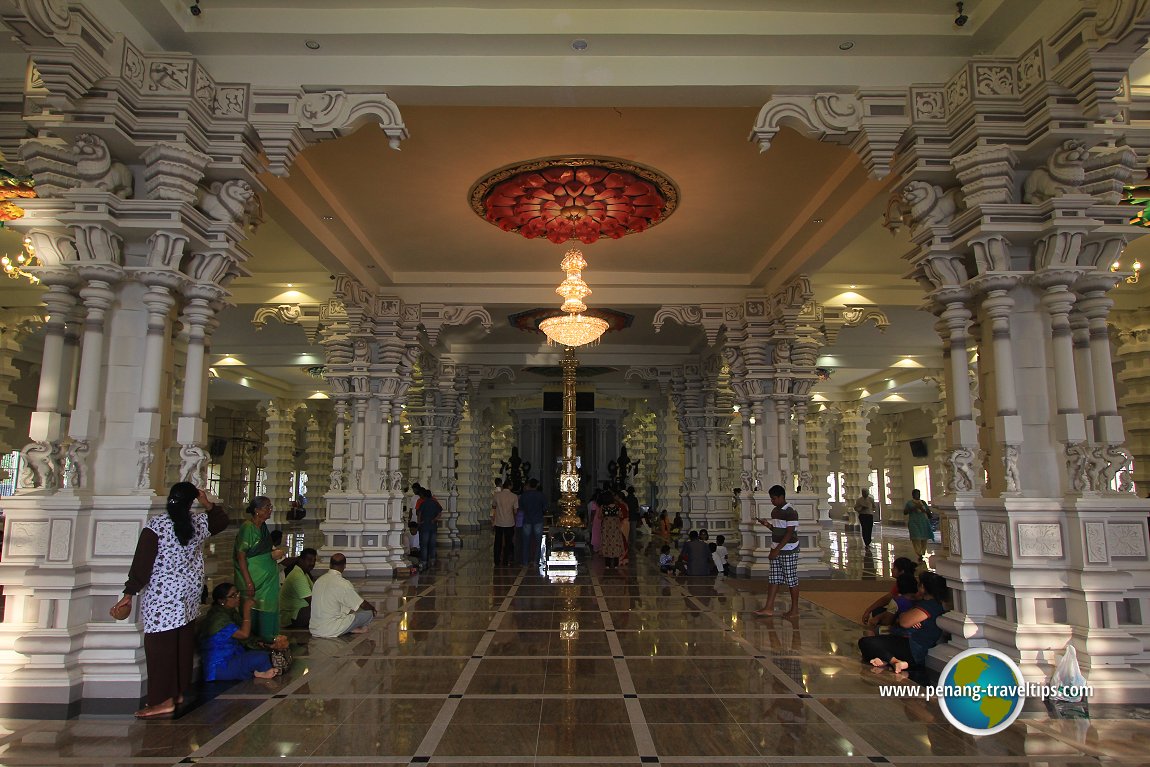 The maha mandapam of the Arulmigu Balathandayuthapani Temple (1 July 2012)
The maha mandapam of the Arulmigu Balathandayuthapani Temple (1 July 2012)
Penang Hokkien Section
This section is in Penang Hokkien and is part of Learn Penang Hokkien. It helps you practise reading in the language. If you are new to this writing system and would like to know more, read Penang Hokkien Made Easy. Refer also to the Penang Hokkien Dictionary for words that you are not sure.Arulmigu Balathandayuthapani Kovil si3 te3-it1 tua33-keng1-eh3 Ke1ling3na1 ang3kong1 ti1 Penang. Cit1-leh1 am1 si3 khi4 hor3 cit1-leh3 Ke1ling3na1 ang3kong1 mia3 Murugan. I1 tun1 si3 kui1-leh3 te3-it1 lau33-eh3 Ke1ling3na1 am1 ti1 Penang. Te3-it1 ca4 eh3 si2, Balathandayuthapani si3 cit1-keng3 se1-keng3 am1 nia3, ti1 Ang3mor3 Hua3 Hnui2-eh3 chooi1chiang2-eh3 pni1nya4.
Ti1 1850 ni2 eh3 si2, eng3goay3 hua3 hnui2 boek1 yong33 heh1-peng2-eh3 tay3, Balathandayuthapani tiok3 pnua1 chut3 khee3. I1 sua4 khee3 i1-eh3 te3-jee3-leh3 sor1cai3. Tua3 ti1 cit1-leh1 sor1cai3 ta3-ta3 ni2 co3 Thaipusam, ju1 lai3 ju1 ce33 lang2 lai2, kau3ka1 uh3 si2 boh3 sor1cai3 hor3 lang3 khia3 tun4.
Eng3goay3 boek1 tay4 khah1 ce33 lang2, Arulmigu Balathandayuthapani Kovil pnua1 kokh1 cit3 pien3. I1-eh3 sin1-eh3 sor1cai3 tua3 ti1 snua3pni1. Boek1 kau3 tiok3 boek1 paek3 512-can3-eh3 lau3thui1, khah1 kuan2 goay3 Batu Caves gok3.
Ti1 sin1-eh3 Balathandayuthapani uh3 cit3-leh3 chit1-can3-eh3 Rajagopuram. Rajagopuram is cit1-hang3-eh3 Ke3ling3na1 thak3. Balathandayuthapani-eh3 Rajagopuram si3 te3-it1 tua33-leh2-eh3 rajagopuram for Murugan-eh3 am1 tua3 kui3 se1kai3.
A3si3 lu1 ai1 khee1 khnua3 Arulmigu Balathandayuthapani Kovil, liau4 lu1 mai1 khek1sio1 ka1 lang2, te3-it1 ho4 si3 mm3thang3 khee3 ti1 Thaipusam-eh3 tiam1sniah1.
Translation
Arulmigu Balathandayuthapani Kovil is the biggest Hindu temple in Penang. This temple was built for the Hindu deity Murugan. It is also among the oldest Hindu temple in Penang. In the beginning, Balathandayuthapani was just a small shrine beside the waterfall of the Penang Botanic Gardens.
In 1850, Balathandayuthapani had to move because the gardens is taking over the land. It moved to its second site. At this second site, it hosted the annual Thaipusam which over the years attracted an increasing number of people, until at times there is no place to stand.
In order to take in more people, Arulmigu Balathandayuthapani Kovil relocated once again. Its new location is on a hill side. To reach this site requires climbing a 512-step staircase, which is taller than that of Batu Caves.
At the new Balathandayuthapani is a seven-storey Rajagopuram. A Rajagopuram is a Hindu temple tower. The Rajagopuram of Balathandayuthapani is the biggest rajagopuram for a Murugan temple in the world.
If you wish to visit Arulmigu Balathandayuthapani Kovil, and you do not wish to get squashed by the crowd, then it's best not to go during Thaipusam.
For more reading material in Penang Hokkien, go to Reading Material in Penang Hokkien. View also the Penang Hokkien Video Guides for video readings in Penang Hokkien.
Updates
29 June 2012: As reported, the Balathandayuthapani Temple held its maha kumbabishegam or consecration ceremony attended by state leaders, in the presence of forty Hindu priests from the six main Murugan temples in South India, and another forty chief priests of temples in Bali. The consecration ceremony began at dawn with the sprinkling of holy water on devotees at around 11:00 am.22 April 2012: It is reported in The Star that the new hillside temple building of the Balathandayuthapani Temple is expected to be open to the public following the consecration ceremony on 29 June, 2012. The new building, constructed at a cost of RM9 million, will feature the tallest gopuram of any Hindu temples dedicated to Lord Murugan outside of India. It will stand at a height of 21.6 meter, and will be ornately adorned with intricate sculptures reflecting the South Indian temple architecture.
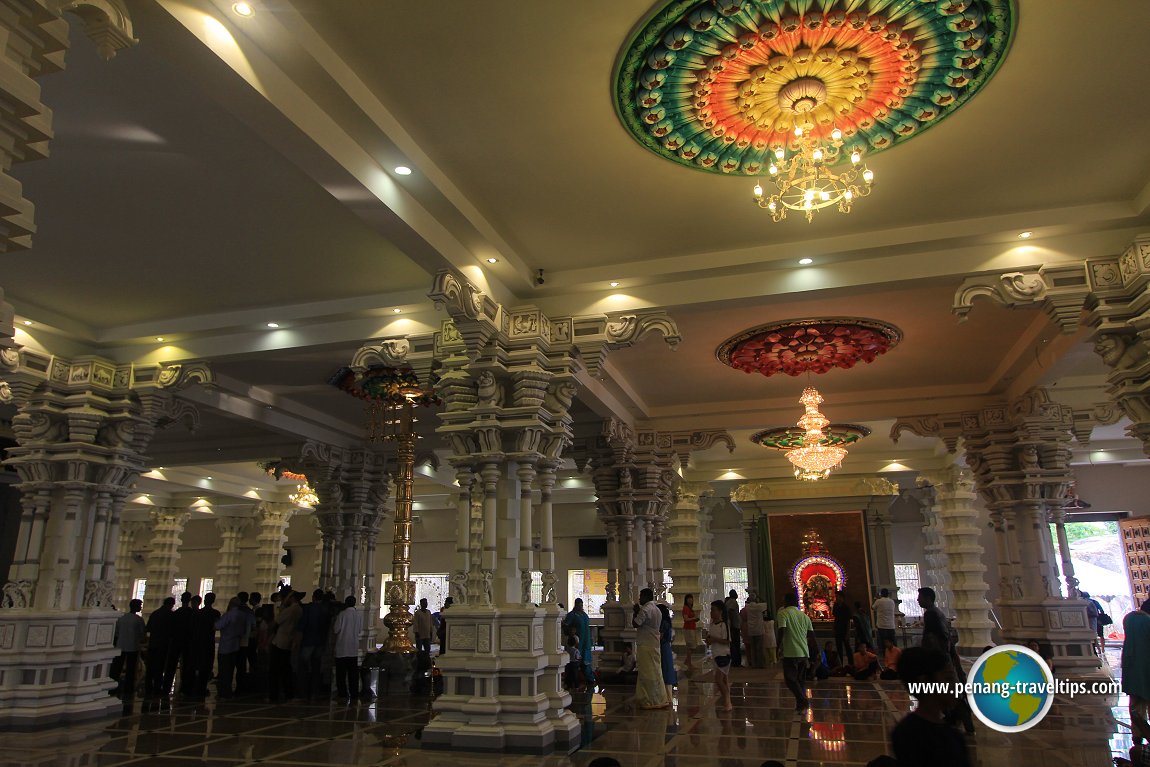 Chandeliers in the maha mandapam of the Balathandayuthapani Temple (1 July 2012)
Chandeliers in the maha mandapam of the Balathandayuthapani Temple (1 July 2012)
The temple pillars feature the 14th and 15th century architectural styles of Chola and Padya temple designs. These are executed by artisans specially brought in from India.
An additional 22 toilets are being built to supplement the existing forty in the temple grounds, as the temple is expected to receive thousands of devotees and sightseeing visitors.
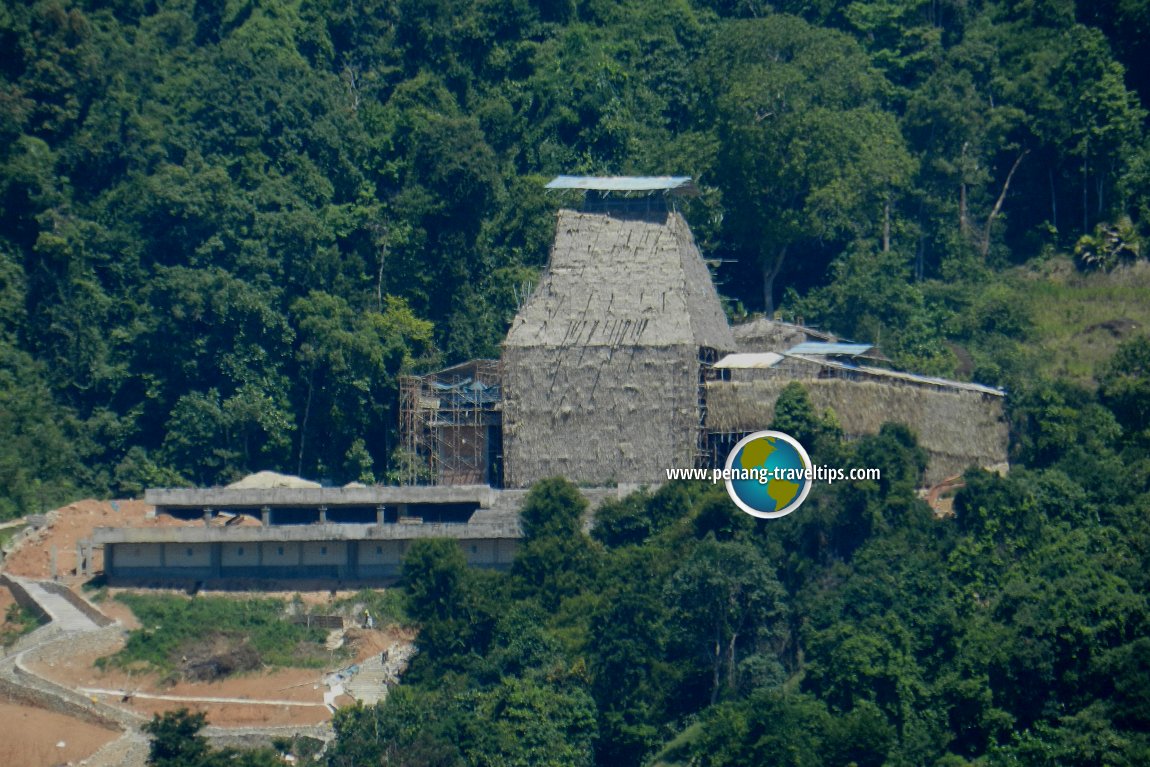 Balathandayuthapani Temple under construction (11 June 2011)
Balathandayuthapani Temple under construction (11 June 2011)
Shrines within the Arulmigu Balathandayuthapani Complex
Being the most important Hindu temple in Penang, the Arulmigu Balathandayuthapani includes numerous shrines, sub-temples and auxiliary halls within its compound. The following are some of the buildings that are located within the complex.Arulmigu Naga Naathar Temple
DetailsArulmigu Sree Ganeshar Temple
DetailsGandhiji Ashram @ Dewan Mahatma Gandhi
DetailsOriginal Balathandayuthapani Temple
DetailsShiva Statue of Balathandayuthapani Temple
DetailsArulmigu Balathandayuthapani Temple is  on the Map of Jalan Kebun Bunga, Penang
on the Map of Jalan Kebun Bunga, Penang
For other video guides, go to Penang Travel Tips Video Guides or load the Video Guide Playlist.
List of Hindu Temples in Penang and Hindu Temples in Malaysia

Copyright © 2003-2025 Timothy Tye. All Rights Reserved.

 Go Back
Go Back